|
Wigmaking
Wigs are one of the best tools a makeup artist can work with because the
hair does so much to a persons looks.
Even if this is the case the art
of wig making is sadly enough dying out. This is because of stricter budgets
in today's theatres and a lack of experienced wigmakers in the few schools.
Today we are about 20 active wig makers in Gothenburg
and unfortunately the theatres don't have the money to take on pupils. I can
only hope something radical will happen so that the art can live on and
advance.
Recently I have started to see a lovely trend on Instagram where new
wigmakers are helping each other to create great work!
There might be hope!! |
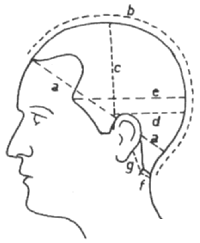
The making of a wig starts with a meeting with the actor and taking
the
head measurements.
|

These measurements are necessary for transferring the actors head to a
wooden block and then for sewing a foundation.
|
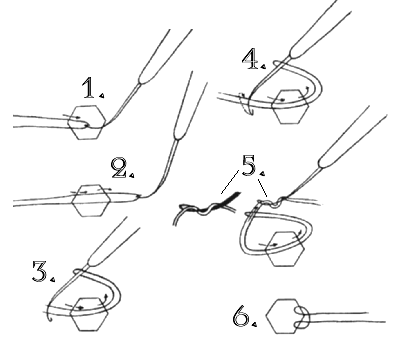
Ventilating technique | The foundation is sewn with cotton
ribbon, cotton lace and nylon lace. When you have finished sewing it
is time to once again meet the actor and do a fitting of the
hairline. This is done to make certain that it will fit and give a
lifelike impression. After this you have to ventilate (Wig
makers term for tying a knot) in all the hair. Hair by hair!
Most
theatre and film wigs are made of human hair. We mostly use European
hair
but also Asian bleached hair.
The choice of hair quality is based on
the hair style of the finished wig.
Asian hair is stronger and will
last longer. However, for film European hair looks more natural as
it moves better. |
Ventilating a wig could be compared with tying a rug. The knot is
just about the same but the material is much more expensive (1 Kilo
hair costs approx. $2000).
The method of ventilating was invented
during the time of King Louis XVI in France when he made it a
fashion to wear wigs (he was ashamed of losing his own hair).
The method hasn't changed over the years with the exception for a
certain adaptation in how to make the hairline look better.
As
you can see on the picture above we use a small needle that looks
like a fishing hook, a ventilating needle. With this one you take a
couple of strands at a time and make a small knot. In a wig this is
done approx. 30-40.000 times.
In the front of the wig you use
just one strand at a time.
|
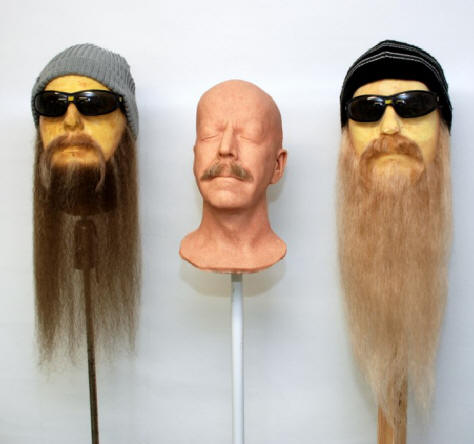
|
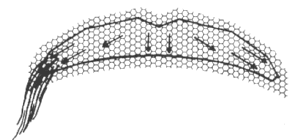
Directions in a moustache |
As a makeup artist, moustaches and beards are an important part
of male fashion history. Often you can tell from what time period a man
is just by looking at his beard.
Beards are made in the same way as
wigs, but you only use the thinnest lace so it won't be too
uncomfortable.
When you tie a moustache the direction of the knot is
very important. You shape both moustaches and wigs in the knot when you
choose the direction in the lace.
Now you probably think that
this sounds repetitive and boring as hell.
You
are wrong!
This is a very
creative process which involves
mixing colours
and looking for good directions. When things are
going well you will start feeling like it is coming to life.
It takes about 40-60 hours to tie a wig but when
you are done and
it is tried
on for the first time and looks
real, I promise
that you are willing to do it all over again......
| |
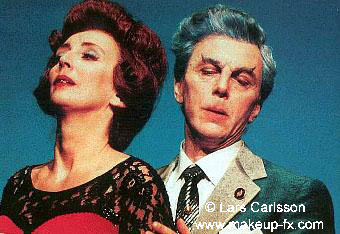
Marianne
Myrsten and Torgny Sporsen wearing wigs in the Gothenburg Opera's
"Äppelkriget"
With the kind permission of
Göteborgs Perukmakeri I have published a step by step guide on how to
make wigs.
Click here to see it!
If you don't care about how wigs are made but would want one.
Then I
recommend you to have a look in my shop:
 |
Some pictures (c) Bengt Hjord with permission.






